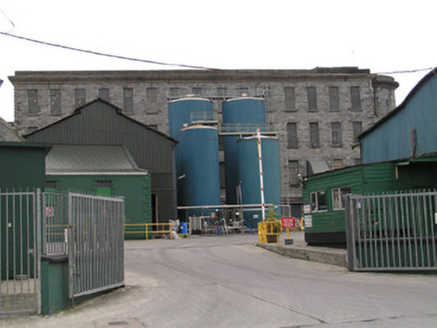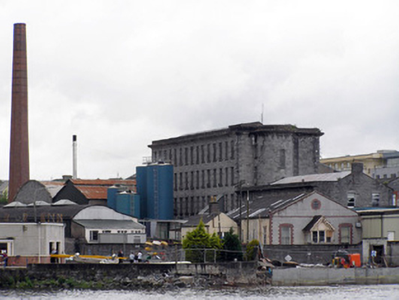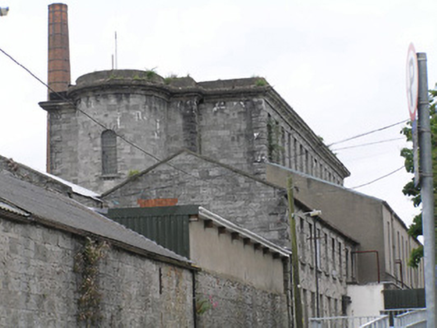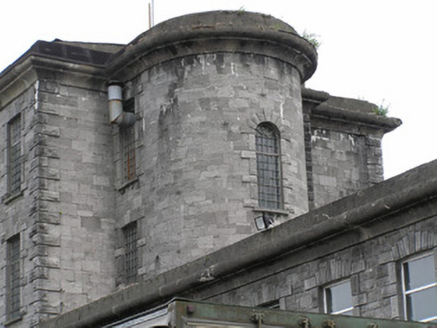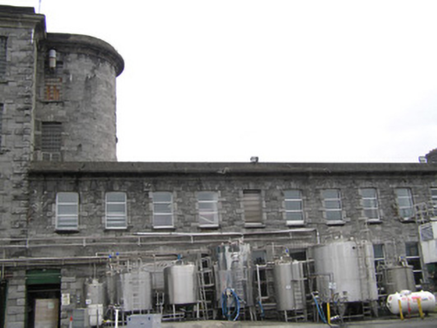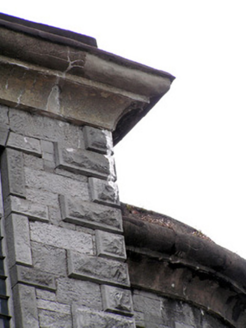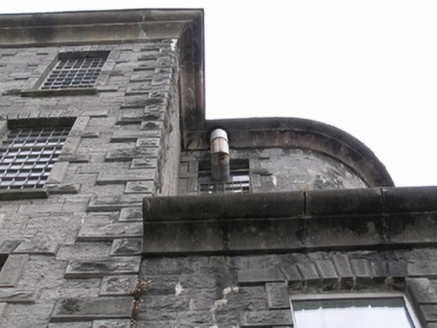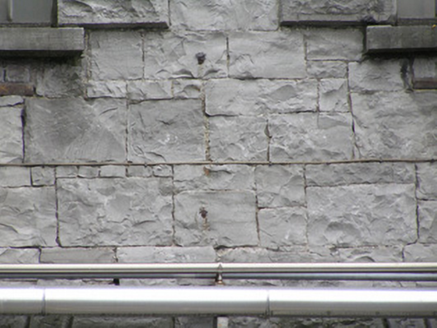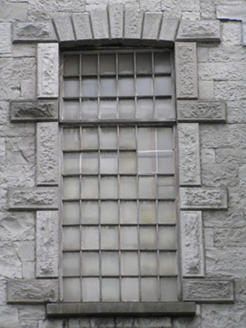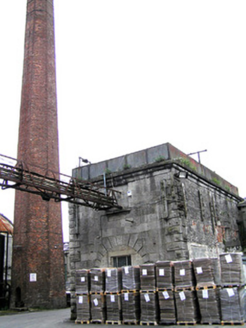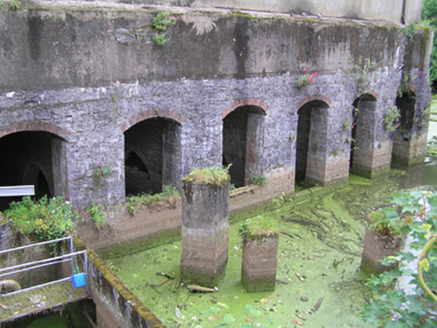Survey Data
Reg No
21512053
Rating
Regional
Categories of Special Interest
Architectural, Artistic, Historical
Previous Name
Cleeve's Condensed Milk Factory originally Lansdowne Spinning Mill
Original Use
Factory
Historical Use
Mill (water)
Date
1850 - 1860
Coordinates
157055, 157138
Date Recorded
02/06/2005
Date Updated
--/--/--
Description
Detached fifteen-bay four-storey stone factory building, built in 1853, facing west with a full-height bow end to south side elevation, and prolonged to south by a ten-bay two-storey block, and to north by a twenty-three bay single- and two-storey block, to which various twentieth-century alterations and interventions have been made. Roof hidden behind parapet wall with emphatic limestone ashlar parapet entablature. Pitched corrugated tin roof to ten-bay block. Squared, snecked and coursed tooled limestone walls with rock-faced rusticated quoins to sides. Rendered section to north. Camber-arched window openings with cut limestone sills, rusticated voussoirs and sides, having multiple-paned metal-framed windows. Blind window openings to east elevation, may be a later alteration. Round-arched window openings to bow end with rusticated surround, limestone ashlar sills and metal-framed windows. Round-arched door opening with vigorously rusticated surround, with timber doorframe set in deep recess, forming central glazed panelled timber door with sidelights and large spoke wheel fanlight over profiled timber lintel.
Appraisal
A vast early industrial building complex, dominated by a massive limestone factory building, the monolithic scale of which casts a strong presence on the west bank of the River Shannon. It was originally built to make agricultural equipment and is now used as a dairy processing building. The 1872 edition of the Limerick City Ordnance Survey identifies this site as the Landowne Spinning Mill, which was built by the Russell family. It was later taken over by the Cleeve family who embarked on the construction of the condensory building. The factory's continued industrial use and dominating presence marks it as a landmark building within Limerick City, particularly as seen from Sarsfield Bridge.
